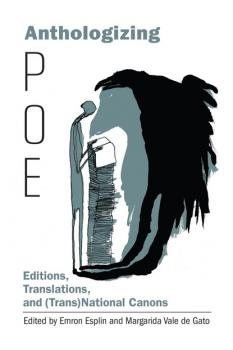ТОП просматриваемых книг сайта:
Группа авторов
Список книг автора Группа авторовАннотация
Refuge in a Moving World draws together more than thirty contributions written from multiple disciplines and fields of research and practice to discuss different ways of engaging with, and responding to, migration and displacement. The volume combines critical reflections on the complexities of conceptualizing processes and experiences of (forced) migration, with detailed analyses of these experiences in contemporary and historical settings around the world. Through interdisciplinary approaches and methodologies – including participatory research, poetic and spatial interventions, ethnography, theatre, discourse analysis and visual methods – the volume documents the complexities of refugees’ and migrants’ journeys. This includes a particular focus on how people inhabit and negotiate everyday life in cities, towns, camps and informal settlements across the Middle East and North Africa, Southern and Eastern Africa, and Europe. A key dynamic documented throughout the book is the multiple ways that responses to displacement are enacted by people with personal or family experiences of (forced) migration. These people appear in many roles: as researchers, writers and artists, teachers, solidarians, first responders, NGO practitioners, neighbours and/or friends. Through the application of historically and spatially sensitive, intersectional and interdisciplinary lenses, the contributors explore the ways that different people – across axes of religion, race, sexuality, gender and age – experience and respond to their own situations and to those of other people, in the context of diverse power structures and structural inequalities on the local, national and international level. Ultimately, Refuge in a Moving World argues that working collaboratively through interdisciplinary approaches and methodologies has the potential to develop nuanced understandings of processes of migration and displacement, and, in turn, to encourage more sustainable modes of responding to our moving world.
The Shaken and the Stirred - Группа авторов
The Year's Work: Studies in Fan Culture and Cultural TheoryАннотация
Over the past decade, the popularity of cocktails has returned with gusto. Amateur and professional mixologists alike have set about recovering not just the craft of the cocktail, but also its history, philosophy, and culture. The Shaken and the Stirred features essays written by distillers, bartenders and amateur mixologists, as well as scholars, all examining the so-called 'Cocktail Revival' and cocktail culture. Why has the cocktail returned with such force? Why has the cocktail always acted as a cultural indicator of class, race, sexuality and politics in both the real and the fictional world? Why has the cocktail revival produced a host of professional organizations, blogs, and conferences devoted to examining and reviving both the drinks and habits of these earlier cultures?
Информация о книге
Автор произведения Группа авторов
Жанр Кулинария
Серия The Year's Work: Studies in Fan Culture and Cultural Theory
Аннотация
This report examines Russia’s military and diplomatic campaign in Syria, the largest and most significant Russian out-of-area operation since the end of the Cold War. Russia’s experience in Syria will shape its military thinking, influence promotion and personnel decisions, impact research and development for its arms industry, and expand its influence in the Middle East and beyond for the foreseeable future. Yet despite the importance of Russia’s involvement in Syria—especially as the United States competes with countries such as Russia and China—there has been little systematic analysis of Russia’s campaign in Syria. This research aims to help fill the gap and provides some new analysis and data. It conducts a broad assessment of the Russian campaign—including political objectives, diplomatic initiatives, and civilian targeting—which places the military campaign in a wider context. In addition, it compiles a data set of Russia’s civilian targeting and analyzes satellite imagery of Russian activity.
Overall, this report concludes that Russia was relatively successful in achieving its main near-term political and military objectives in Syria, including preventing the collapse of the Assad regime (an important regional partner) and thwarting a possible U.S. attempt to overthrow Assad. Still, Russia used a systematic punishment campaign that involved attacks against civilian and humanitarian infrastructure in an attempt to deny resources—including food, fuel, and medical aid—to the opposition while simultaneously eroding the will of civilians to support opposition groups.
Overall, this report concludes that Russia was relatively successful in achieving its main near-term political and military objectives in Syria, including preventing the collapse of the Assad regime (an important regional partner) and thwarting a possible U.S. attempt to overthrow Assad. Still, Russia used a systematic punishment campaign that involved attacks against civilian and humanitarian infrastructure in an attempt to deny resources—including food, fuel, and medical aid—to the opposition while simultaneously eroding the will of civilians to support opposition groups.
Информация о книге
Автор произведения Группа авторов
Жанр Прочая образовательная литература
Серия CSIS Reports
Аннотация
America may not be at war, but it is not at peace. Recent public and political rhetoric have revealed the escalation of a pervasive and dangerous “us versus them” ideology in the United States. This powerful book is motivated by the contributors’ recognition of continuing structural violence and injustice, which are linked to long-standing systems of racism, social marginalization, xenophobia, poverty, and inequality in all forms. Calls to restore America’s greatness are just the most recent iteration of dehumanizing language against minority communities. The violation of the civil and human rights of vulnerable groups presents a serious threat to American democracy. These deeply rooted and systemic inequities have no easy solutions, and the destructive nature of today’s conflicts in America threaten to impede efforts to build peace, promote justice, and inspire constructive social change.Acknowledging the complexity of building peace in the United States, this volume represents the first step in envisioning a more just, peaceful country—from the grassroots to the highest levels of leadership. The editors have brought together a diverse group of scholars, conflict resolution practitioners, civil society leaders, community peacebuilders, and faith leaders who are committed to pro-social change. Collectively, they examine how best to understand the current issues, deescalate destructive public rhetoric, undermine the “us versus them” polarity, and support those currently working for positive change. Together, the contributors share experiences and perspectives on the past, present, and future of peacebuilding; develop a vision for how we can collectively respond in our communities, campuses, and congregations; and catalyze action during this pivotal moment in America.
Аннотация
This book is a compilation of papers presented at a day-long conference organised in Chennai, on March 28 2019 by the Chennai Centre for China Studies (C3S) in partnership with the National Maritime Foundation (NMF) and the Department of Defence and Strategic Studies, University of Madras, and supported by the Indian Navy and Indian Coast Guard on the theme, “Securing India's Maritime Neighbourhood: Challenges and Opportunities”. Contributors included a whole galaxy of luminaries from the serving and veteran echelons of the Indian Armed Forces, the diplomatic community, maritime industry, doyens of Indian academia, and distinguished personalities from the Fourth Estate. A number of facets of seminal importance to national security were addressed in the book. These included conceptual, geopolitical, economic, environmental and technological issues.
Аннотация
If you have never been inside of a prison, there are things you will not know about the community there. You may guess at them, but that is not the same. What it feels like. What it sounds like. What goes on there; these all define portions of what it is. These definitions, or parameters of life inside, come to you quite viscerally. You feel them in and through your skin before you actually give word or shape to understanding them. You sense before you think. The themes that come from a prison poet are varied. Most poems you would not have to know the poet was a prisoner to gain access to the import of the word-pictures. Human experience, while diverse, shares some common archetypal qualities. But, some will grow in meaning knowing where the poems were planted. I think themes about being captive are universal, but when you know the poet is in a prison, it can open you to listen differently. Is that a good thing? I don't know. But it is true.
Аннотация
Twenty years before his famous trial, Galileo Galilei had spent two years carefully considering how the results of his own telescopic observations of the heavens as well as his convictions about the truth of the Copernican theory could be aligned with the Catholic Church's position on biblical interpretation and the authority of the magisterium. The product of these two years was an unpublished letter to the Grand Duchess Christina of Tuscany, the mother of his patron, Cosimo II de' Medici.
Much has changed since this letter was written in 1615, but much has remained the same. This collection of articles by renowned international scholars provides the historical context of the letter as well as a description of the scientific world of Galileo. It also explores those issues that make this 1615 letter a document for our time: the public role of religious authority, the truth of the Bible, and the relationship of scientific inquiry to social justice. Galileo's letter to Christina has become a classic text in the history of the relationship between science and religion in the West for good reason; this volume explores why the letter has earned its rightful place as a classic even for today.
Much has changed since this letter was written in 1615, but much has remained the same. This collection of articles by renowned international scholars provides the historical context of the letter as well as a description of the scientific world of Galileo. It also explores those issues that make this 1615 letter a document for our time: the public role of religious authority, the truth of the Bible, and the relationship of scientific inquiry to social justice. Galileo's letter to Christina has become a classic text in the history of the relationship between science and religion in the West for good reason; this volume explores why the letter has earned its rightful place as a classic even for today.
Аннотация
An idol is a good thing. It is good because God created it. Nothing exists that God did not create and God created all things good. So sex can be an idol, but before it was an idol it was a good creation of God. Materialism is an idol, but to have a material world was God's idea in the first place. Workaholism is an idol, but work is itself a good gift of God. What turns these good gifts of God into idols is what we have done with them. So we have common forms of idolatry expressed in consumerism, individualism, narcissism, careerism, and hedonism; while there are less familiar expressions found in omnism, fatalism, Gnosticism, relativism, positivism, and reductionism. We have put these and other things on a pedestal and made them into mini-gods. In the end they fail to deliver what they promise. These twelve mediations on a scriptural passage by faculty members of Wycliffe College, Toronto, emphasize that the good news is that God can redeem idols. Each one can be restored to its proper place in God's created order and placed under God's authority.










